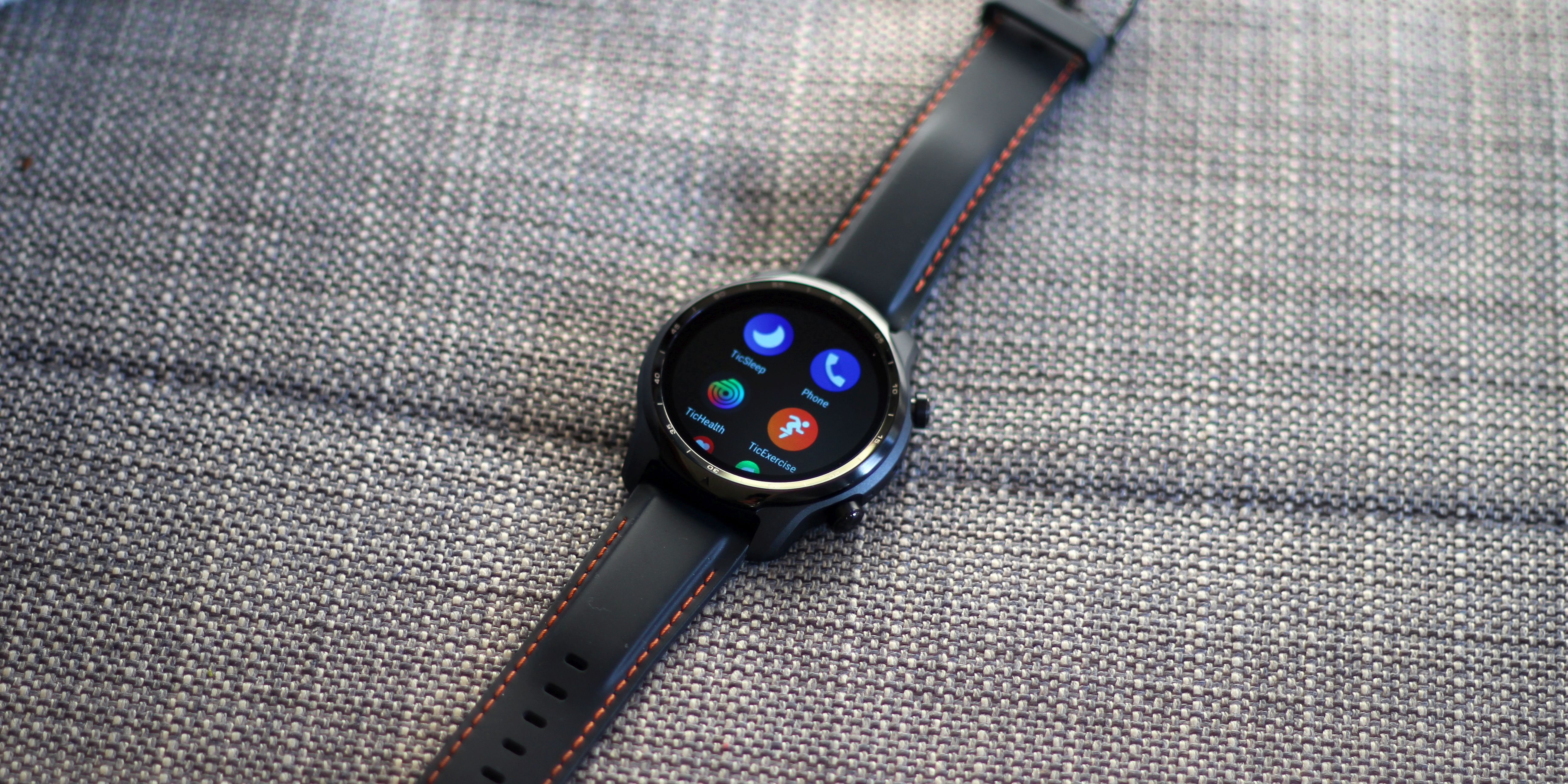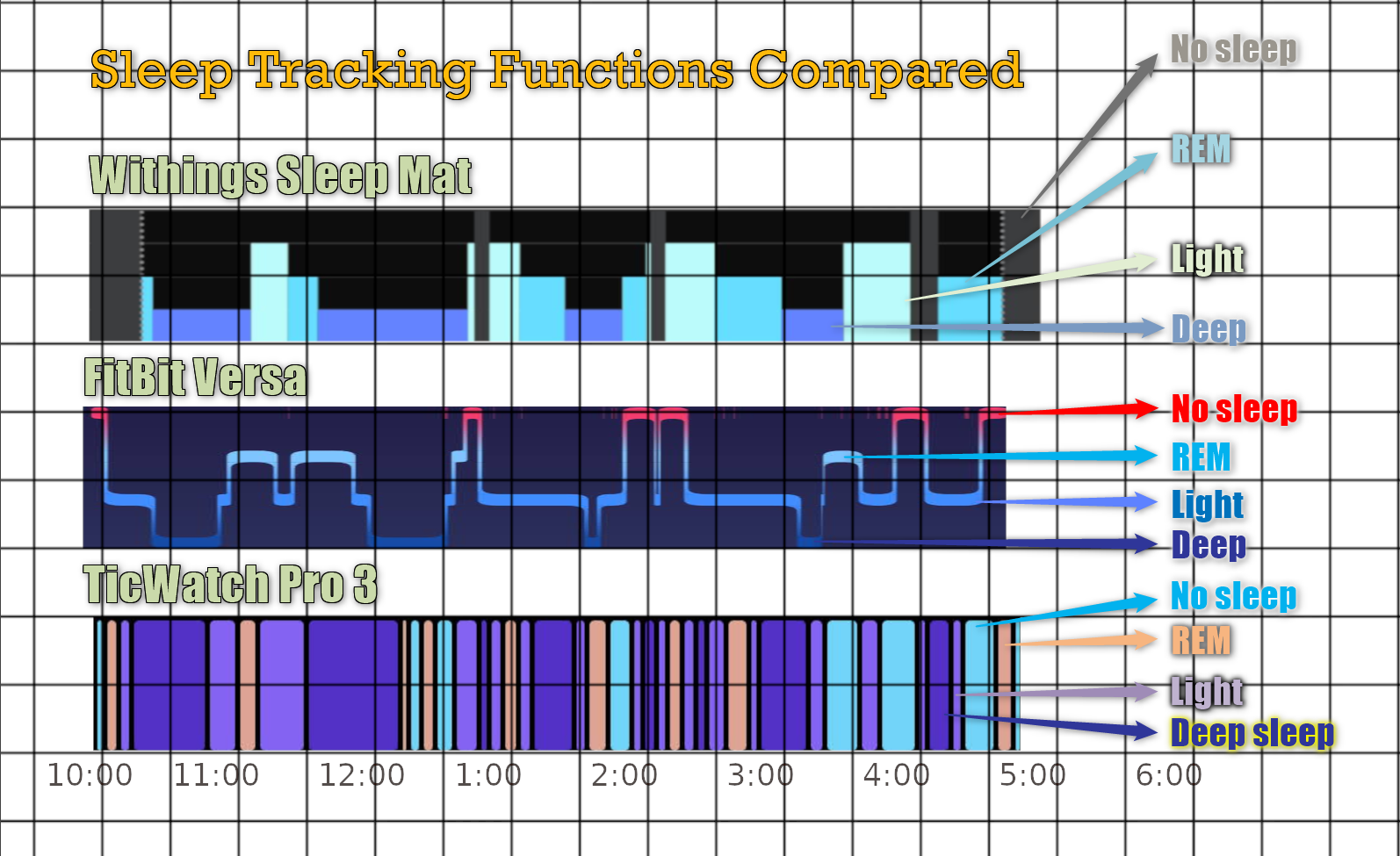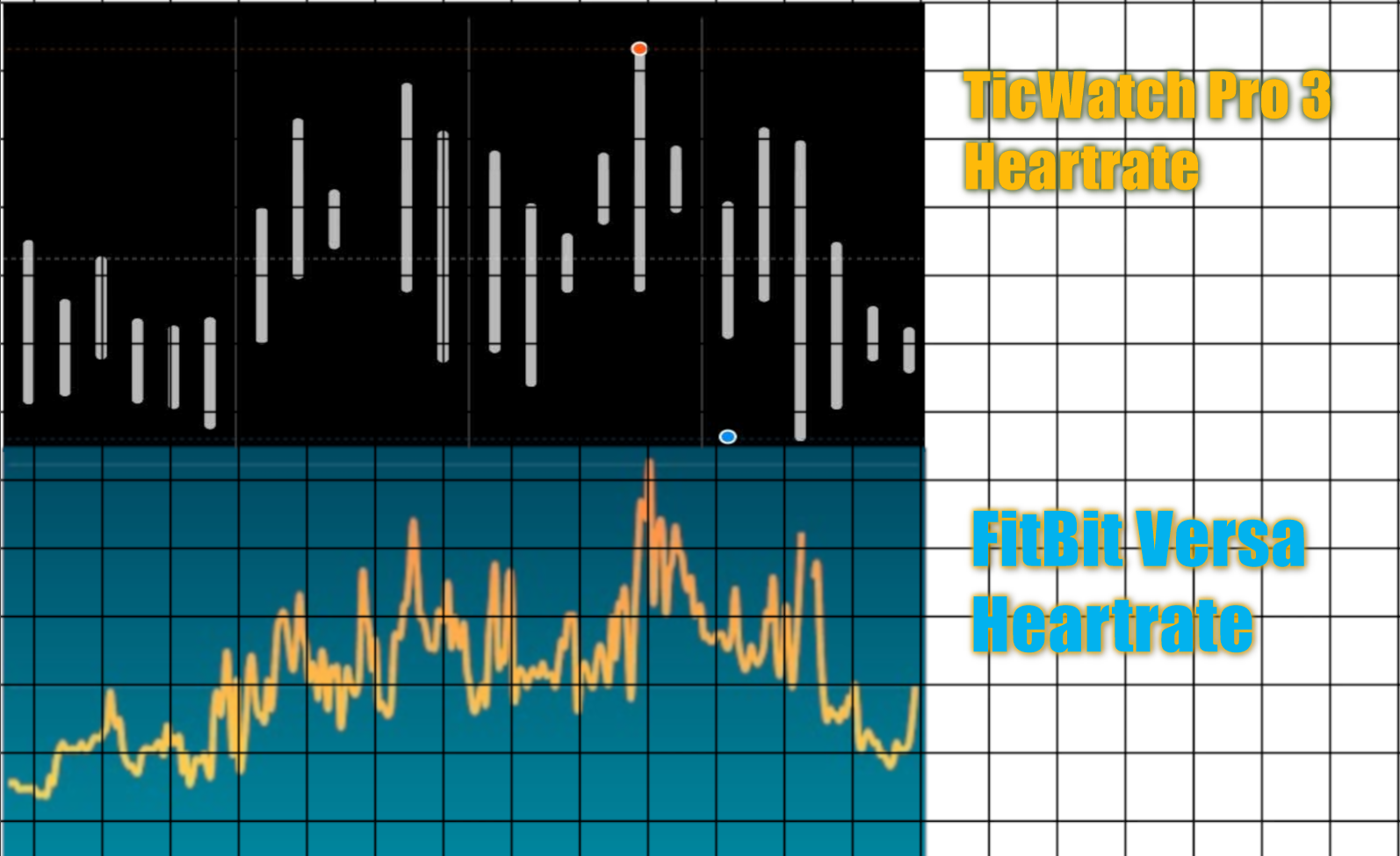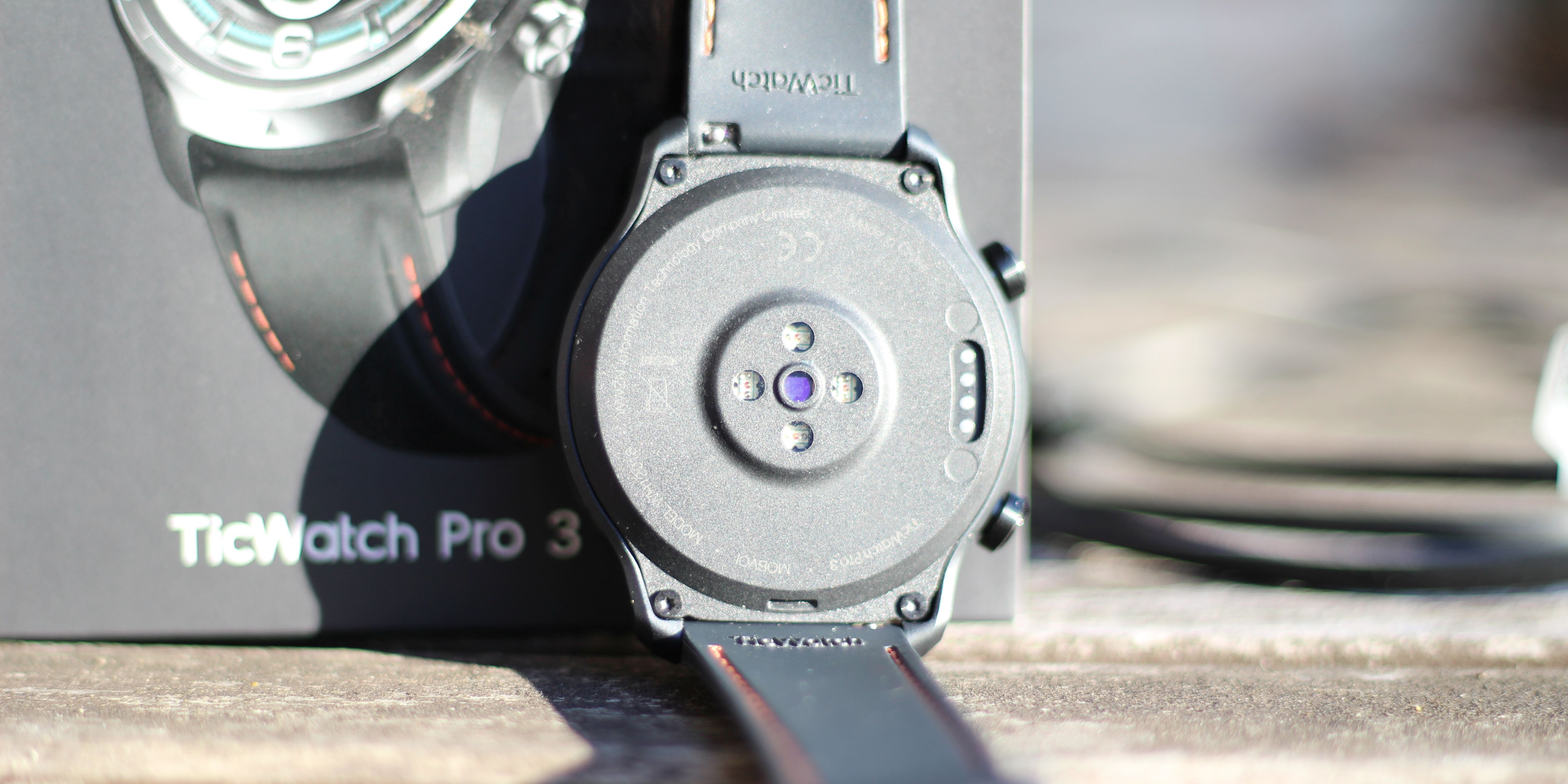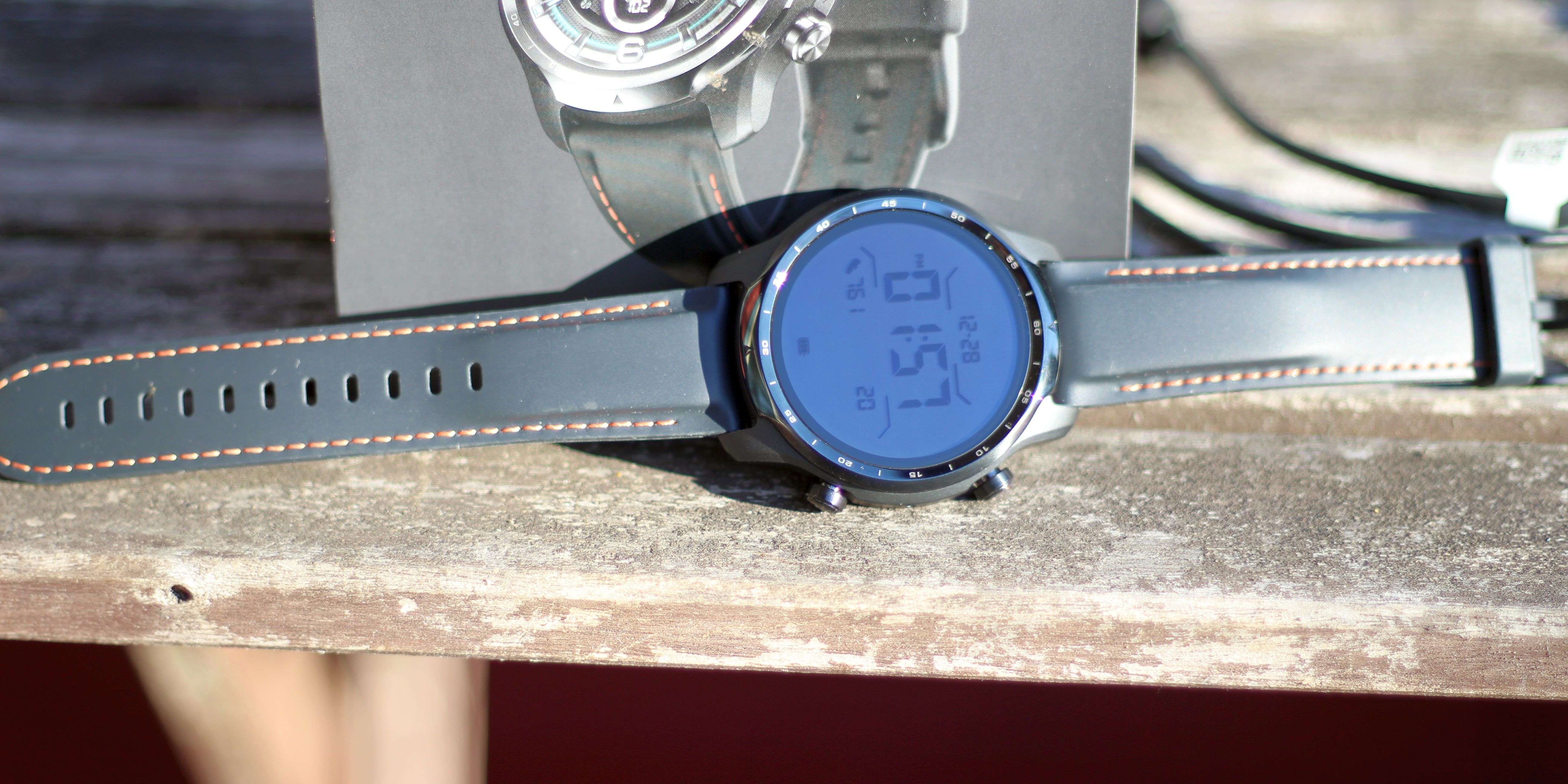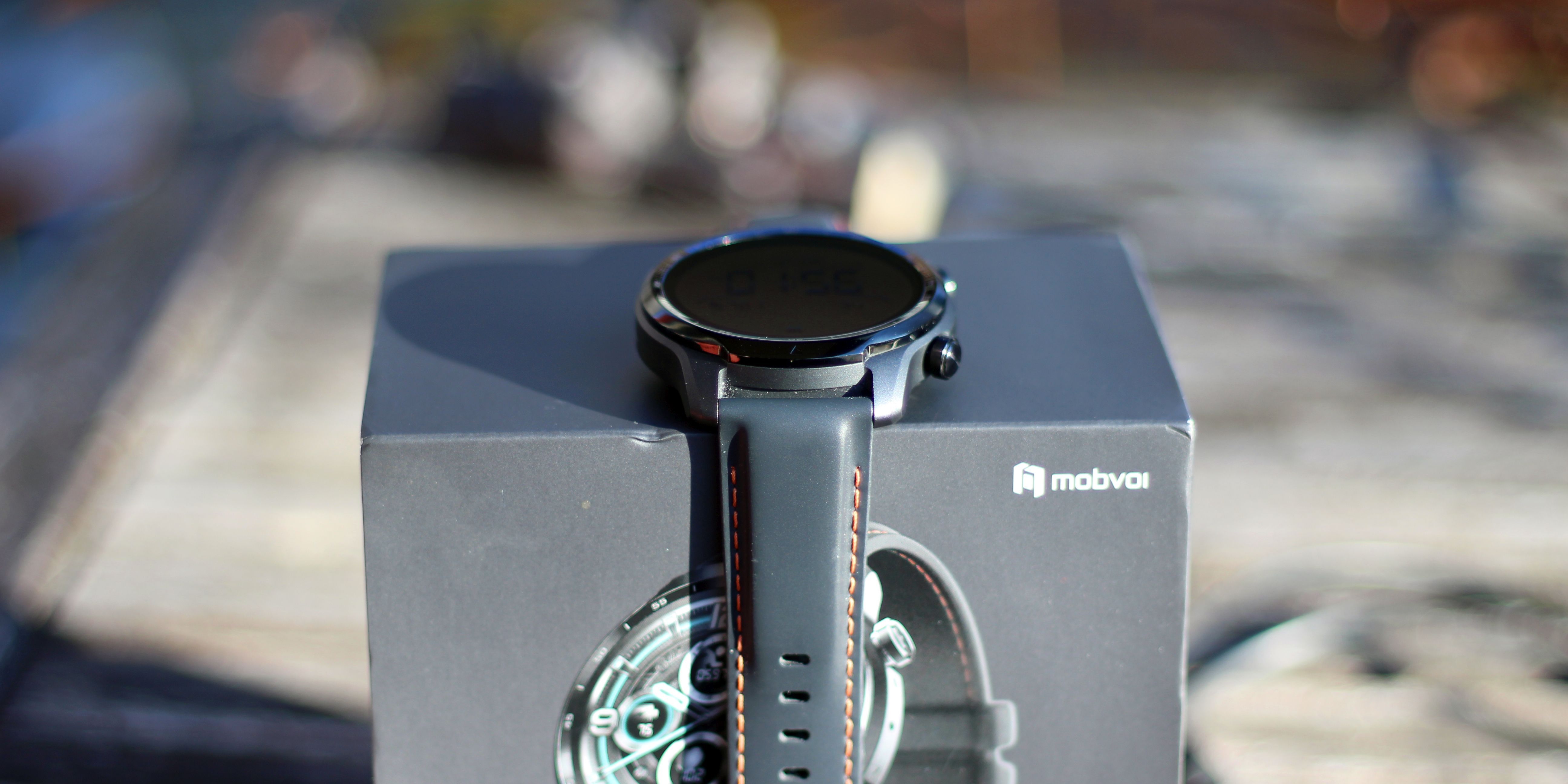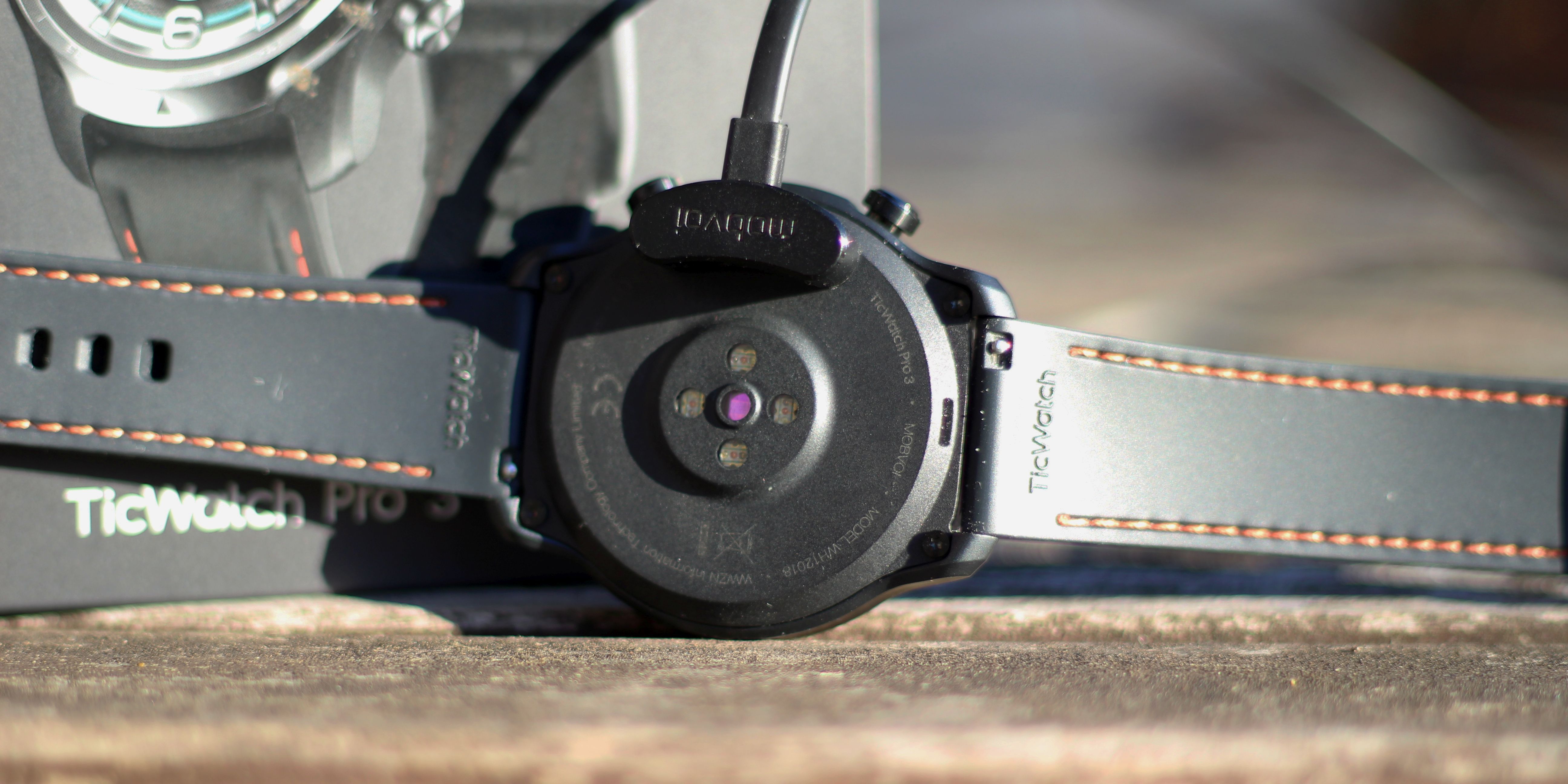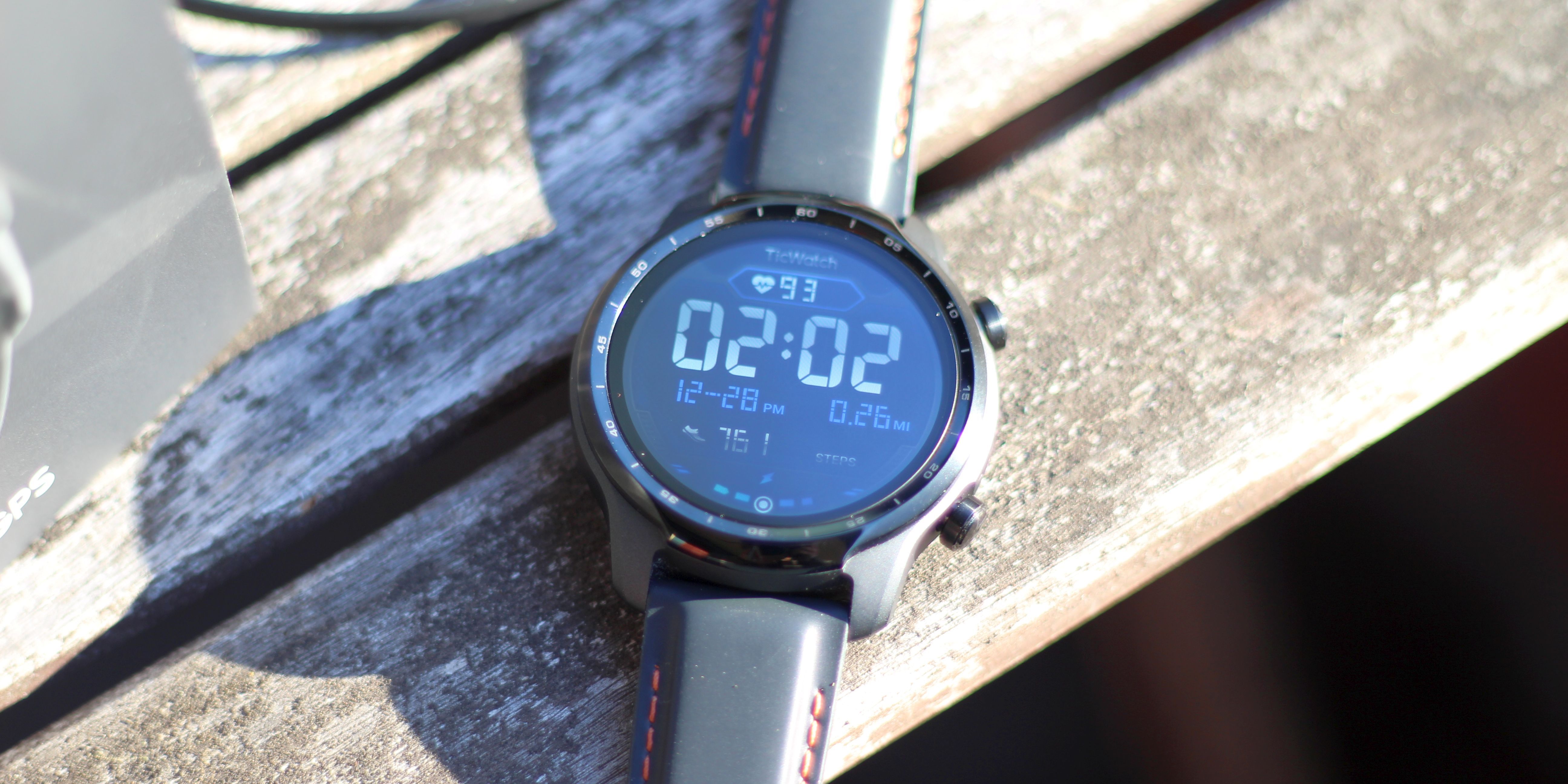TicWatch Pro 3
For anyone committed to buying a Wear OS smartwatch, the TicWatch Pro 3 smashes all competitors. At $299, no other Wear OS device comes close. Compared to an Apple Watch Series 6, the TicWatch Pro 3 offers similar features, with less accuracy and a weak app ecosystem, but at a dramatically lower price point. Because Apple's watchOS doesn't work with Android devices, whether or not you buy a TicWatch comes down to your phone: those with an iPhone should buy an Apple Watch. Those with Android should buy a TicWatch Pro 3.
- Brand: Mobvoi
- Heart Rate Monitor: Yes, PPG
- Color Screen: Yes, AMOLED
- Notification Support: Yes
- Battery Life: 3 to 45 days
- Operating System: Wear OS
- Onboard GPS: Yes, four GPS satellites
- Offline Media Storage: Yes, 8GB
- Customizable Strap: Yes, 22mm
- SIM Support: EU only
- 3-day real battery life
- Good price
- Latest hardware
- Fast interface
- Good exercise tracking
- Best Wear OS smartwatch
- Poor-accuracy sleep tracking
- Wear OS is undersupported
- No sleep-apnea detection
- Minor bug afflicting notifications
- Somewhat large
- No direct PC connection
The Mobvoi TicWatch Pro 3 combines state-of-the-art hardware with strong battery endurance. But is it worth $299? For Wear OS enthusiasts it's the best smartwatch ever made. But who else should buy it?
Hardware Analysis
The TicWatch Pro sports the best hardware in the Wear OS ecosystem. Its second-to-none battery life and diverse features take Android a step closer to the Apple Watch.
But let's get one thing straight: Wear OS isn't a great operating system. While the TicWatch Pro 3 comes closer than any other smartwatch, it's still not on the same level.
- Display: Dual Display combining 1.4" AMOLED 454x454 pixels with FSTN monochrome reflective LCD layer
- Operating system: Wear OS
- Sensor suite: 12-LED array offering: blood oxygen; pulse. Also altimeter; GPS (GPS/ Beidou/Glonass/Galileo/QZSS); gyroscope; accelerometer
- Wireless: Bluetooth 5.0; Wireless 5 (802.11ac)
- Dimensions: 47x48x12.1mm
- Battery life: 72-hours with most features turned on; 18-hours with everything turned on; 45-days as a time piece
- Chipset: Qualcomm Snapdragon Wear 4100
- Wristband: 22mm silicone rubber
- Materials: Aluminum and silicone rubber
- Water and dust resistance: IP68 (mostly water and dust proof)
- Other: integrated single speaker; microphone; ambient light sensor; LTE Vodafone option for European markets
It's Great Partly Because of the Qualcomm Snapdragon Wear 4100 Platform
The Wear 4100 platform comes with a TSMC "12nm" production process, 1GB of RAM, 1.7GHz ARM Cortex CPU A53 CPU cores, and an always active processing core for tracking steps. That means it's significantly faster than the previous generation Wear 3100 platform. The biggest upgrade is in battery life. The 12nm production process crushes the older 28nm process in active-use efficiency.
Unfortunately, even the Wear 4100 platform doesn't match Apple's S6 line of wearable processor. And even though Wear 4100 is state-of-the-art for Wear OS, Qualcomm has already announced a successor in the Wear 4100 Plus platform. It looks like Qualcomm has begun a yearly release cycle for its wearable-designed chips, so what you buy today will be obsolete next year.
In other words, Wear 4100 represents a multigenerational leap ahead of the older Wear 3100 platform. Compared to the 3100, the 4100 improves on its processor technology node, processor architecture, graphics processor, clock speed, and co-processor.
A Great Sensor Suite and LED Layout But No ECG
The TicWatch Pro 3 includes an enormous number of photoplethysmography (PPG) sensors, housed in four clusters. It offers four red, green, and infrared LEDs for measuring blood oxygenation and pulse rate.
The one criticism that I have is that it lacks Electrocardiogram (ECG) sensors. While PPG offers accurate enough metrics, the gold standard for health tracking is ECG. That’s the main reason medical-grade blood oximeters use a red light attached to the finger: because red LED PPG is sensitive to movement and unless it's tightly anchored in place on your finger, there will be more errors in the data accuracy. Wrist-based PPG is less accurate.
Wearables like the Apple Watch and the upcoming Withings ScanWatch include electrocardiogram (ECG) sensors. However, it's worth noting that the ECG on the Apple Watch isn't automatic and requires touching the crown to get a reading.
The Dual Layer Screen Improves Daylight Visibility and Battery Life
Mobvoi's dual-layer screen is the greatest innovation in the TicWatch Pro 3. While the 454x454 pixel-resolution AMOLED screen looks great, it still suffers from screen glare when outdoors. However, the Film Compensated Super Twisted Nematic (FSTN) reflective LCD screen stacked on top of the AMOLED screen allows for excellent outdoor visibility, superior to anything from Apple or Wear OS.
The big innovation, which I've seen only on a few other wearables, is its ability to slip into a slimmed-down "Essential Mode". In Essential Mode, the AMOLED screen turns off and the reflective LCD turns on. With Essential Mode, users can get up-to 45-days of battery life. Without Essential Mode, the TicWatch gets around three days of battery life, provided you haven't enabled its stress-tracking feature, which is a battery hog.
Design and Feel
The TicWatch, although bulky and heavy, feels more comfortable than other Wear OS watches. While its design trades looks for minimalism, its comfortable fit makes for one of the better watches around.
The Silicone Rubber Strap
Most default silicone rubber straps look terrible and feel hot and sweaty after an exercise. The TicWatch Pro 3's band uses a smoother finish, which makes it feel less uncomfortable after a workout.
Although its size and heft complicate wearing long-sleeved coats, it's otherwise one of the better-fitting wearables around. Although truth be told, Mobvoi shouldn't use generic straps. Waffle straps offer better comfort and bow-style bands make sizing a snap so you don't have to resize the band every time you take it off and put it on again.
Design, Styling, and Buttons
The TicWatch Pro 3 doesn't look terrible, but it's by no means a fashion-oriented design. The watch uses a combination of aluminum metal on its exterior frame, with a black aluminum cover on the portion that touches your arm. While its basic-black color scheme won't turn any heads, it doesn't need to. The TicWatch is designed for minimalism and functionality over style. Maybe the design won't impress your friends, but it's both functional and comfortable.
The two hardware buttons provide different functions. The top button doubles as the app launcher and a shortcut to Google Assistant. A single press opens Mobvoi's custom app drawer. A double-press launches the Assistant.
The lower-right button is customizable. A long-press opens a special menu, containing start and restart functions, as well as essential mode, and a feature for clearing water out of the integrated speakers. Finally, the long-press function also allows you to customize the button to launch any app you want.
By default, a single-press opens the exercises list. But if you customize the button, it can launch anything. I prefer direct-pairing Bluetooth earbuds and running the Navcasts app, which allows for offline podcast downloads.
The Charger Is Really Good
A minor annoyance I have with Wear OS watches is their charger. On otherwise solid designs, like the Fossil Gen 5, is the abysmal magnetic charging cradle. The charger was prone to breakage and its magnetism sometimes disastrously pulled the integrated charging ring out of the watch itself.
The TicWatch's cradle is less complicated; it's just a nub. While I would have preferred a replaceable cable, or an integrated USB-C port, the magnet is very strong and the glue-free design omits the possibility of pulling any critical component out of the watch.
Sleep Tracking
The TicWatch Pro 3's sleep tracking offers a range of analysis similar to a FitBit, although with one problem: it's not as accurate.
But how inaccurate is it?
Multiple studies indicate that the FitBit gets sleep tracking anywhere from 81-91% accurate. One study found that the FitBit's REM sleep-tracking accuracy is 71% accurate, meaning it mostly gets sleep tracking right. Unfortunately, Mobvoi's algorithm doesn't match up at all with FitBit or Withings's data. I can only conclude that it is inaccurate.
Compared to a Withings Sleep or a FitBit, it had serious problems detecting REM.
While it's possible Mobvoi figured out how to do sleep tracking better than FitBit and Withings, it's unlikely. Both Withings and FitBit showed a high degree of synchronicity in their readings. Even so, as an artificial intelligence company, I'd imagine that Mobvoi will improve its accuracy going into the future. But for right now, its deep-sleep tracking is borderline at best. And it's completely inaccurate for tracking REM sleep.
Exercise Tracking
One of the best features of the TicWatch is its exercise tracking. Its heart rate accuracy is comparable to a FitBit and, unlike other Wear OS fitness trackers, the TicWatch can automatically determine the kind of exercise that you're doing.
The tracking did, however, try to overzealously classify my cycling as either running or walking but you can input exercises manually. I've noticed that it does not detect my resistance band and Pilates exercises automatically at all.
Overall, the TicWatch does a great job at heart-track tracking. While its automatic exercise tracking falls short of perfection, it remains a solid, passable alternative to a FitBit.
Other Features
The TicWatch Pro 3 includes a few other health-tracking features not often seen in devices of its class, including stress detection and continuous blood oxygen monitoring.
Stress Detection
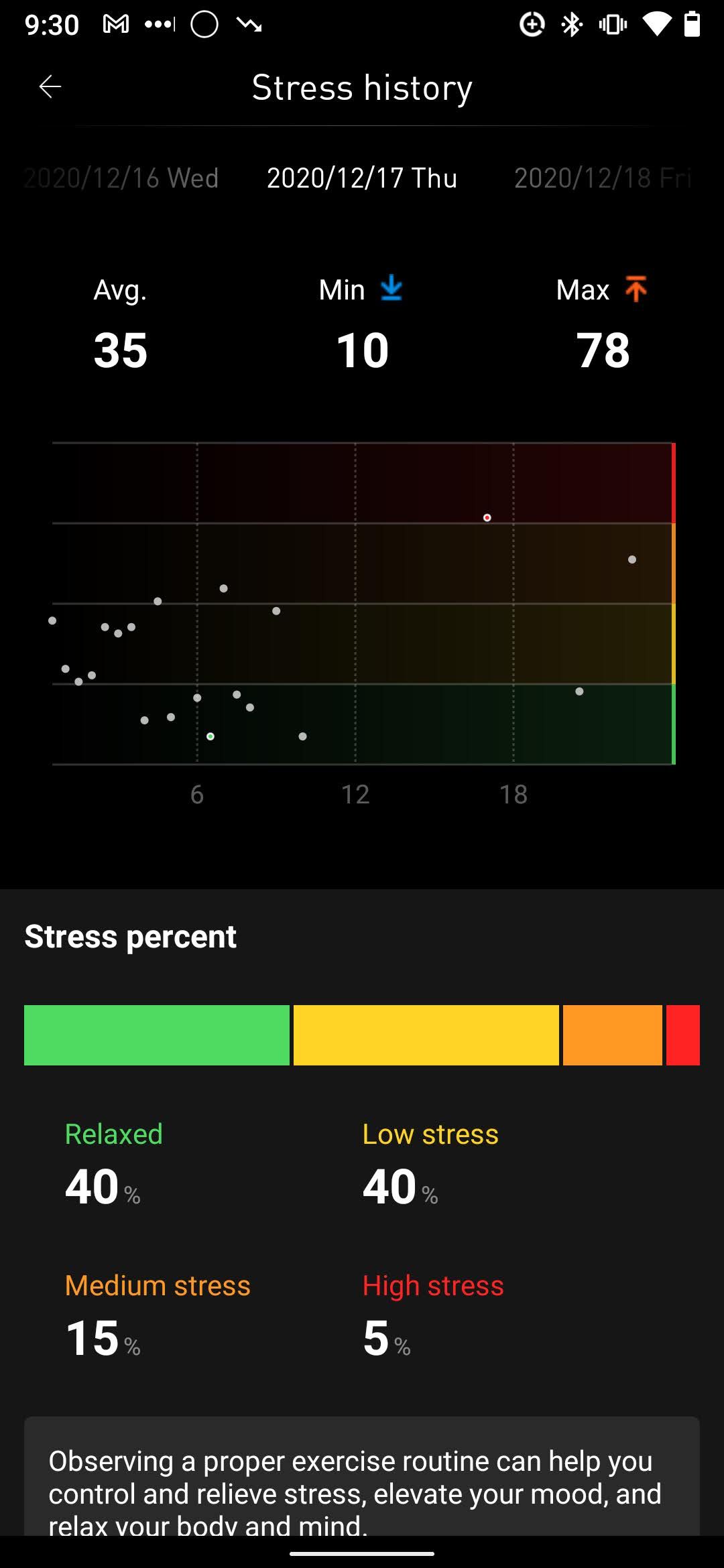
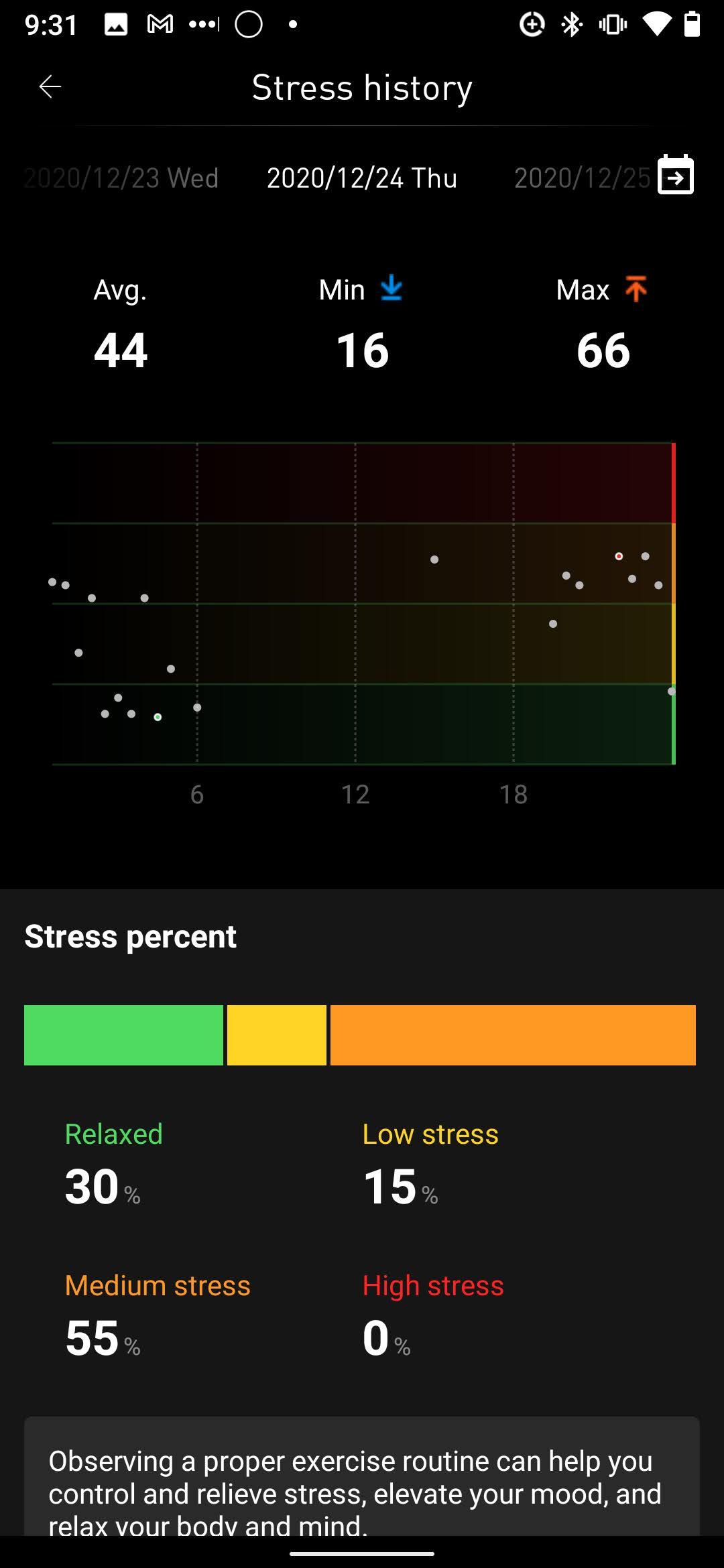
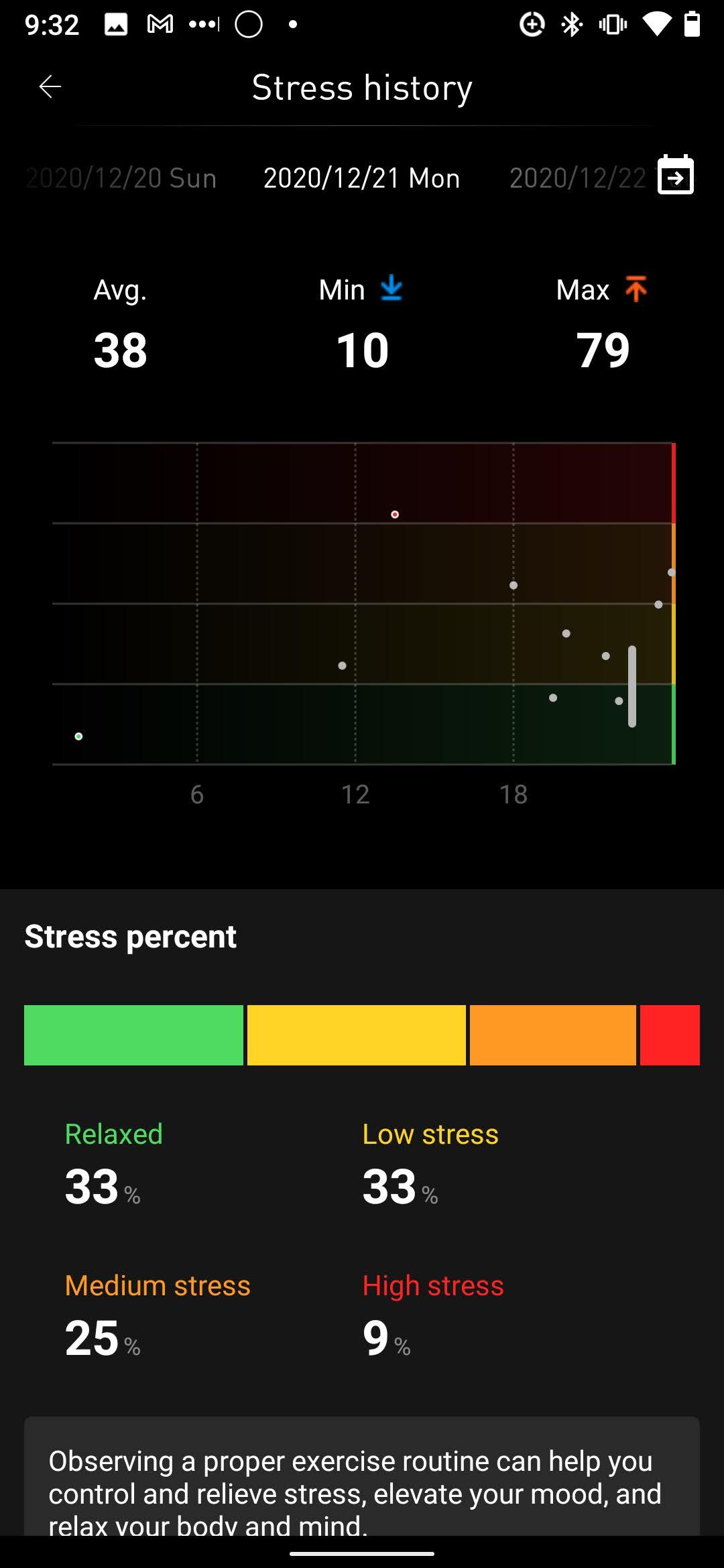
Stress detection just started appearing in high-end fitness trackers. It works like this: the TicWatch Pro 3 measures your heart rate and then algorithmically interprets that data as either stressful or non-stressful. In theory, the measures indicate stress and the watch can alert you when your stress levels exceed safe thresholds. For those with Post-Traumatic Stress Disorder (PTSD), could in theory get an alert before their symptoms progress to unmanageable levels.
In practice, the TicWatch's stress-tracking doesn't hold up.
Electrodermal Activity (EDA) is the cutting-edge in affective-stress measurement. The TicWatch Pro 3 doesn't use an EDA sensor. It uses light-based PPG sensors. In other words, it uses an inadequate detection technique for gauging stress levels. On top of that, there's no scientific consensus that even EDA sensors can track emotional stress according to a 2018 journal article published by Siegen University.
On another level, stress tracking is intermittent. Rather than continuously tracking stress, the TicWatch gives interval stress readings. So the data gets reported every few minutes, inconsistently, which makes it less useful to those with stress disorders.
There's also a manual stress level check. Unfortunately, the reading takes several minutes to complete and even minor amounts of movement can cause the app to fail a read. Overall, the stress detection doesn't really offer much value in its daily monitoring, although it can offer a useful measurement for qualifying meditation exercises.
For those who want dubious quality stress tracking, the best wearable is probably the FitBit Sense, although I wouldn't trust its data either due to the relatively unknown utility of using EDA to track stress.
Blood Oxygen Monitoring
The blood oxygen sensors use red LEDs with greater skin penetration compared to the green LEDs used in PPG heart-rate monitoring. Unfortunately, they require complete stillness in order to get accurate reads and there's no sleep-apnea detection.
Overall, the blood oxygen monitoring doesn't compare to the blood-oxygen monitoring on its competitors. For example, Withings's Sleep Mat underwent validation studies for sleep apnea tracking. There are no health-oriented certifications or studies for the TicWatch.
In summary, the intermittent tracking offered by Mobvoi is good but not great. It seems to be on equal footing to a FitBit but lacks any sleep apnea detection.
Is the TicWatch Pro 3 Worth Buying?
For anyone committed to buying a Wear OS smartwatch, the TicWatch Pro 3 smashes all competitors. At $299, no other Wear OS device comes close. Compared to an Apple Watch Series 6, the TicWatch Pro 3 offers similar features, with less accuracy and a weak app ecosystem, but at a dramatically lower price point. Because Apple's watchOS doesn't work with Android devices, whether or not you buy a TicWatch comes down to your phone: those with an iPhone should buy an Apple Watch. Those with Android should buy a TicWatch Pro 3.
However, if you're primarily interested in fitness or sleep tracking, you're better off with a FitBit than a TicWatch Pro 3 (or an Apple Watch).
Why Should You Trust My Opinion?
I've gone hands-on with the majority of smartwatches, either at conventions and trade shows. And have obsessively tracked my fitness metrics since 2014. My methodology for gauging fitness wearables focuses on practically. Wearables need to seamlessly blend function, form, and value, while preserving user privacy. A big problem we're facing is that wearable manufacturers are not taking appropriate steps to assuage concerns about our data security or privacy.

